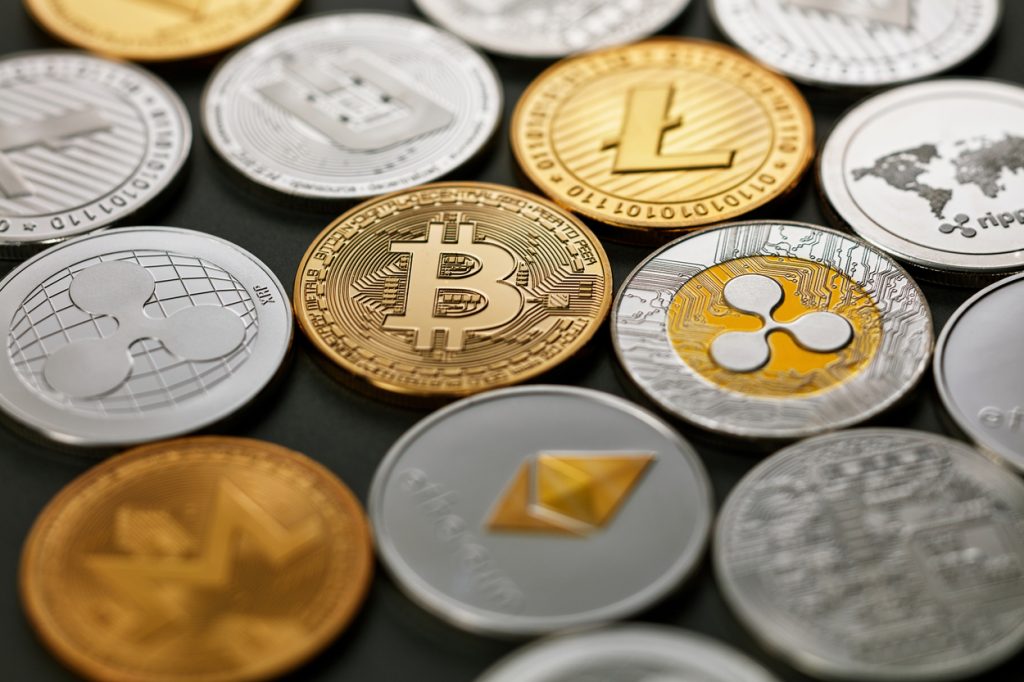Bitcoin is The Beatles of the crypto world. It’s the name everyone thinks of first when you mention their field, and that’s usually because they set the standard that the rest of the industry is built on.
But is there a Rolling Stones on the horizon with Litecoin? Arguably better, more advanced, but can’t quite reach that same level of recognition. Despite the superior Litecoin price and product, it simply isn’t closing the gap on Bitcoin. What does it need to do to get there? We explain in this guide.
What is Bitcoin?
Bitcoin has definitely got to be the most high profile of crypto coins. People who have never considered buying cryptocurrency have heard of Bitcoin, whereas they might be lost on what Dogecoin or Ethereum is.
Bitcoin is considered the example coin that people turn to when explaining crypto to a wider audience. The Bitcoin network is highly decentralized and works due to a distributed blockchain ledger maintained by miners and nodes around the world, with no central authority controlling it. This makes bitcoin independent from control by governments or large corporations.
Bitcoin was the first successful cryptocurrency. It has the most name recognition and is still the dominant player in terms of market capitalization amongst cryptos. But it’s important to remember that like The Beatles or the Blackberry phone, just because it was the first doesn’t mean it will forever be the best. And, like just about any book, movie, band, tech, etc. there is always a dark horse waiting to overtake the lead.
What is Litecoin?
Is that dark horse, Litecoin? A lot of people think so. Created in 2011, Litecoin is a fork of the Bitcoin core client and is known for its faster transactions and bigger supply of coins.
While Litecoin does not have Bitcoin’s level of name recognition or network effects yet, it is considered a competitor of Bitcoin due to its technological improvements which aim to make it simpler and more convenient to conduct blockchain payments between users.
But what are these technological advancements? Are they a few tweaks to the system or large differences that might cause crypto buyers to move on from Bitcoin.
The everyman’s crypto coin
One advantage Litecoin has over Bitcoin is its technological advancements that make for a better product for the user. Litecoin is able to confirm transactions much more quickly than Bitcoin, allowing the user to better use their currency. In a fintech world of faster transactions getting you almost anything you want the next day, this is important. The median transaction confirmation time for Litecoin is around 2.5 minutes versus over 10 minutes for Bitcoin. Knowing how fickle customers are, even 2.5 minutes is too long to wait for a transaction.
Additionally, due to faster and cheaper transactions, Litecoin offers lower transaction fees. The average Litecoin transaction fee is significantly lower than Bitcoin’s increasingly expensive transaction costs. This makes micropayments and retail purchases cheaper to conduct in LTC. This makes it a better everyday option than Bitcoin. Its vision focuses more on being used for payments versus primarily being a stored value asset like Bitcoin.
This is a smart move, since large transactions are going to be relatively low in numbers than large transactions. It would be the difference between selling TVs versus selling bottles of water. You only need to buy one TV every few years, being generous, whereas you need water every day. If you’re saving your cryptocurrency for that day when you get to buy a TV, Bitcoin’s transaction fees will dry up in the meantime. On the other hand, if you’re the crypto coin that you can buy a bottle of water with, you’ll get a smaller fee on far more transactions.
Essentially Litecoin serves as an established, functionally near-identical backup option to Bitcoin. So, any existential crisis that rocks Bitcoin could send shockwaves of capital flooding towards Litecoin as the next-closest substitute for those fleeing Bitcoin instability or uncertainty.
Does Bitcoin have an advantage?
Yes, a few actually. Litecoin has a ways to go before they can realistically compete with Bitcoin. There is a lot to say about a name. A good reputation can take you further than good technology. Currently, Bitcoin’s total market cap is around $375 billion. Litecoin’s market cap sits at approximately $4.5 billion. So Litecoin’s total valuation is only about 1% of the size of Bitcoin’s market valuation right now.
For Litecoin to reach parity with Bitcoin’s market cap and flip it to become #1, it essentially requires a 100x gain from today’s levels. There are a few ways they can promote the closure of this market gap, including major global retailers or ecommerce platforms like Amazon embracing Litecoin, backing from major fintech players like PayPal and Mastercard, and making Litecoin mining easier or more profitable than Bitcoin.
Can Litecoin realistically overcome these entrenched Bitcoin strengths that are a major contribution to its dominant market position and aren’t likely to be destroyed by marketing that says, “We’re better”? This is money. So, an inherent loyalty comes with the investment. It’ll be hard to break down that customer loyalty.
Conclusion
Litecoin positioning itself successfully as the “silver” to Bitcoin’s “gold” in the cryptocurrency ecosystem might help propel it to play a complementary role as a lower-value crypto asset in comparison to Bitcoin, however, this position means that in order for it to thrive, Bitcoin has to fall. And when you’re the go-to option in a market, it’ll take a lot to topple your empire.

